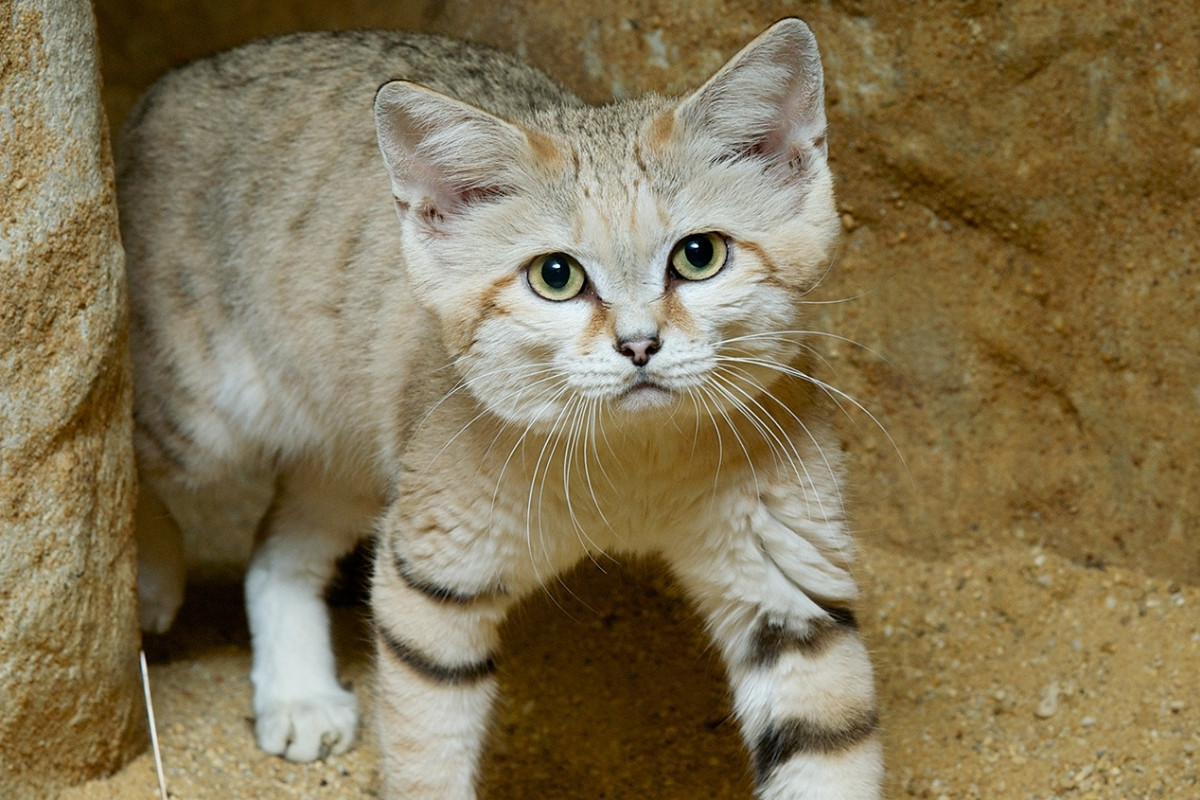
What makes the sand cat so unique? The sand cat, also known as Felis margarita, stands out due to its incredible adaptations to desert life. Found in the arid regions of North Africa, the Middle East, and Central Asia, this small feline thrives where few others can. Its thick fur insulates against extreme temperatures, while furry soles protect its paws from hot sand. Unlike most cats, sand cats can survive without drinking water for months, getting moisture from their prey. Their large ears not only enhance hearing but also help dissipate heat. These nocturnal hunters are masters of stealth, blending seamlessly with their sandy surroundings.
The Elusive Sand Cat
Sand cats are fascinating creatures that thrive in some of the harshest environments on Earth. These small, resilient felines have adapted to life in the desert, making them unique among wild cats. Let's dive into some intriguing facts about these remarkable animals.
Adaptations to Desert Life
Surviving in the desert requires special adaptations, and sand cats have evolved several unique traits to thrive in such an unforgiving habitat.
- Sand cats have thick fur on their paws, which protects them from the scorching sand and helps them move silently.
- Their fur is a pale, sandy color, providing excellent camouflage against the desert landscape.
- Sand cats can survive without drinking water for weeks, obtaining moisture from their prey.
- They have large ears that help them detect the faintest sounds of prey moving underground.
- Sand cats are nocturnal, hunting at night when temperatures are cooler.
Hunting and Diet
Sand cats are skilled hunters, relying on their keen senses and stealth to catch prey in the desert.
- Their diet primarily consists of small rodents, birds, reptiles, and insects.
- Sand cats are known to dig into the sand to catch burrowing prey.
- They have a unique hunting technique, using their paws to tap the ground and flush out hidden prey.
- Sand cats can leap several feet into the air to catch birds in flight.
- They have a strong bite, capable of killing prey quickly and efficiently.
Reproduction and Lifespan
The reproductive habits and lifespan of sand cats are adapted to their harsh environment.
- Female sand cats give birth to litters of two to five kittens after a gestation period of about 60 days.
- Kittens are born blind and helpless, relying on their mother for protection and nourishment.
- Sand cat kittens grow rapidly, becoming independent at around six months old.
- In the wild, sand cats typically live for about 13 years, though they can live longer in captivity.
- Sand cats reach sexual maturity at around 9 to 14 months of age.
Habitat and Range
Sand cats inhabit some of the most arid regions on the planet, showcasing their incredible adaptability.
- They are found in deserts across North Africa, the Middle East, and Central Asia.
- Sand cats prefer flat or undulating terrain with sparse vegetation, avoiding rocky or mountainous areas.
- They often take shelter in burrows abandoned by other animals or dig their own.
- Sand cats are solitary animals, with each individual maintaining a large home range.
- They mark their territory with scent markings and vocalizations to ward off intruders.
Conservation Status
Despite their resilience, sand cats face several threats that impact their survival.
- Sand cats are listed as "Near Threatened" on the IUCN Red List due to habitat loss and degradation.
- Human activities, such as agriculture and urbanization, encroach on their natural habitat.
- Sand cats are also at risk from hunting and trapping, both for their fur and as perceived pests.
- Conservation efforts include habitat protection, research, and raising awareness about the species.
- Captive breeding programs aim to bolster sand cat populations and ensure genetic diversity.
Unique Behaviors
Sand cats exhibit several behaviors that set them apart from other wild cats.
- They have a distinctive, high-pitched meow that can be heard over long distances.
- Sand cats are known to cover their feces with sand, a behavior that helps them avoid detection by predators.
- They can close their ears to keep out sand and dust during sandstorms.
- Sand cats are excellent climbers, often scaling trees or rocks to escape danger or survey their surroundings.
- They have a playful nature, engaging in mock hunting and pouncing behaviors even as adults.
Fascinating Facts
Here are a few more tidbits about sand cats that highlight their uniqueness.
- Sand cats have a low metabolic rate, which helps them conserve energy in the harsh desert environment.
Final Thoughts on Sand Cats
Sand cats are fascinating creatures. They thrive in harsh desert environments, showcasing incredible adaptations like thick fur to protect against extreme temperatures and specialized ears for hunting. These small, resilient felines are masters of survival, making them unique among wild cats.
Their elusive nature and nocturnal habits make them hard to study, but what we know highlights their importance in the ecosystem. Sand cats control rodent populations, which helps maintain balance in their habitats. Unfortunately, they face threats from habitat loss and human activities.
Raising awareness about sand cats can help protect them. Conservation efforts are crucial to ensure these remarkable animals continue to thrive. By understanding and appreciating sand cats, we contribute to preserving the biodiversity of our planet. So next time you think of desert wildlife, remember the incredible sand cat and its vital role in nature.
Was this page helpful?
Our commitment to delivering trustworthy and engaging content is at the heart of what we do. Each fact on our site is contributed by real users like you, bringing a wealth of diverse insights and information. To ensure the highest standards of accuracy and reliability, our dedicated editors meticulously review each submission. This process guarantees that the facts we share are not only fascinating but also credible. Trust in our commitment to quality and authenticity as you explore and learn with us.
